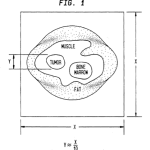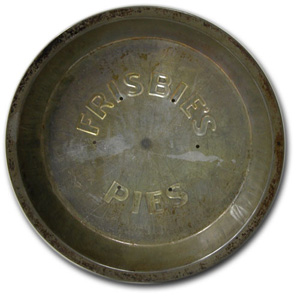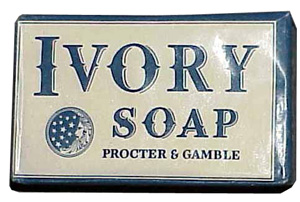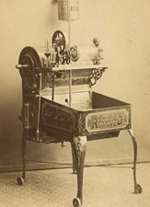Question from Felix:
Hey Invention Geek,
Is there a patent for the MRI machine? If so, who holds the patent?
Thanks for your question, Felix!
The short answer is: yes, there are, in fact, a few of patents associated with the development of the modern MRI.
The slightly longer answer includes stories of betrayal, intrigue, and full page ads in the New York Times.
First of all, Raymond Damadian is widely credited with the initial discovery of Magnetic Resonance Imaging (MRI).
After exposing tissue samples to nuclear magnetic resonance, Damadian observed a difference between tissue in a cancerous tumor and healthy tissue. He published an article in 1971 in the journal, Science, about his findings. In collaboration with other doctors, the first MRI for a full body scan was built in 1977. Damadian named it the “Indomitable,” because of the seven years of complex work needed to finish the project.
He obtained US patent 3,789,832 for the MRI machine, called an “apparatus and method for detecting cancer in tissue,” in February of 1974 and was eventually inducted into the National Inventor’s Hall of Fame for this achievement in 1989.

An image from Damadian's MRI Patent, issued Feb 5, 1974.
Now, while credit for the original MRI scanning machine goes to Dr. Damadian, credit for the development and refinement of magnetic imaging — which is what helps the machine do what it does as well as it does it — belongs mainly to chemist Dr. Paul Lauterbur. Damadian’s original patent had included the use of nuclear magnetic resonance (NMR) for diagnostic imaging, as it ahd been discovered a few decades earlier, but it turned out to be fairly inaccurate and was deemed unsuitable for diagnostic purposes.

Lauterbur's 1992 patent on NMR magnetic imaging.
Lauterbur’s work developing the use of NMR for magnetic imaging was crucial in the ultimate success of the MRI Machine as a diagnostic tool. The doctor worked for decades to improve the accuracy and reliability of the imaging process. In 1992, he was awarded patent 5081992 for a “method for calculating localized magnetic resonance spectra.”
In 2003, Dr. Lauterbur and British chemist Peter Mansfield were jointly awarded the Nobel Prize for their work in the field.
But Dr. Damadian was not to be forgotten. After Lauterbur was awarded the Nobel prize in 2003, Damadian (or friends, as some stories have it) took out full page ads in the most popular newsparers denouncing Lauterbur’s win and demanding reconsideration. While there is no appeals or recall process for a Nobel Prize, Damadian did receive additional recognition in 2004 when he was awarded a Bower Award for scientific excellence by the Franklin Institute.
Dr. Lauterbur was finally given a well-earned place in the National Inventor’s Hall of Fame in 2007.
Both men contributed greatly to the advancement of modern medical diagnostic technology as we know it.
Have Your Own Question for the Invention Geek?
Ask away! If we choose to publish your answer online, you’ll get a free patent mug. Submit your question now!

 Later, Cowen came up with the idea of decorative lighting for a flower pot. This light up device was composed of a metal tube, light bulb and ran on a dry cell battery. This garden decoration was also a failure.
Later, Cowen came up with the idea of decorative lighting for a flower pot. This light up device was composed of a metal tube, light bulb and ran on a dry cell battery. This garden decoration was also a failure. John Hetrick’s invention was the first prototype of today’s modern air bags and derived from an accident on a Sunday afternoon drive. In the spring of 1952, Hetrick, his wife and daughter went for a car ride in their 1948 Chrysler Windsor. The car veered into a ditch on the side of the road to avoid an on-road collision.
John Hetrick’s invention was the first prototype of today’s modern air bags and derived from an accident on a Sunday afternoon drive. In the spring of 1952, Hetrick, his wife and daughter went for a car ride in their 1948 Chrysler Windsor. The car veered into a ditch on the side of the road to avoid an on-road collision. Early history of the frisbee is somewhat unclear, with many people claiming that they were the first to throw a pie pan. However, we do know the first people who turned the leftover pie trash into a plastic toy.
Early history of the frisbee is somewhat unclear, with many people claiming that they were the first to throw a pie pan. However, we do know the first people who turned the leftover pie trash into a plastic toy. In 1966, scientists at NASA developed a open cell polyurethane-silicon plastic to improve the safety of seat cushions on spacecraft and to lessen the impact of landing. The soft cushion material wants to maintain it’s original form and structure when it is compressed. Even after being compressed to 10% of it sizes, the foam will return to its original shape and size which is why it is called memory foam.
In 1966, scientists at NASA developed a open cell polyurethane-silicon plastic to improve the safety of seat cushions on spacecraft and to lessen the impact of landing. The soft cushion material wants to maintain it’s original form and structure when it is compressed. Even after being compressed to 10% of it sizes, the foam will return to its original shape and size which is why it is called memory foam. To better compete within the soap industry, Proctor & Gamble sought to create a high quality, affordable, duel bath bar and laundry product. In 1878, the first successful formula was created and produced under the name of White Soap.
To better compete within the soap industry, Proctor & Gamble sought to create a high quality, affordable, duel bath bar and laundry product. In 1878, the first successful formula was created and produced under the name of White Soap.
 The history of popcorn making and corn popping machines have seen much improvement. Advancements have allowed us to efficiently pop our favorite snack just in time for that movie. In the past, many methods had been executed to pop corn as a treat. One simple way was placing kernels over a fire on a hot rock. As the impact of the heat increased on the kernels, they would pop in different directions. People would chase after the pieces in order catch and enjoy the taste of this snack. Sadly, many of the corn kernels were charred. Luckily, there are easier ways to obtain this delightful goody and it began with the world’s first commercial popcorn machine.
The history of popcorn making and corn popping machines have seen much improvement. Advancements have allowed us to efficiently pop our favorite snack just in time for that movie. In the past, many methods had been executed to pop corn as a treat. One simple way was placing kernels over a fire on a hot rock. As the impact of the heat increased on the kernels, they would pop in different directions. People would chase after the pieces in order catch and enjoy the taste of this snack. Sadly, many of the corn kernels were charred. Luckily, there are easier ways to obtain this delightful goody and it began with the world’s first commercial popcorn machine.